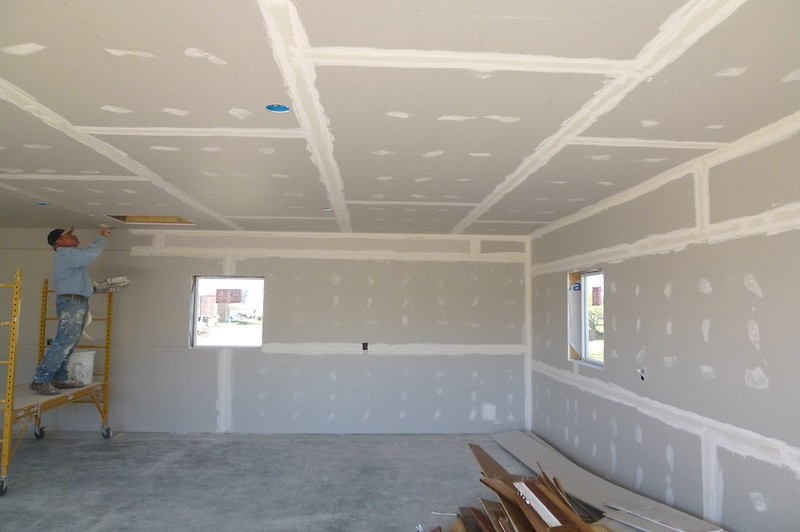If you are looking for help on how to remove water damaged sheetrock, you came to the right article. Read through, and we will guide you every step of the way.
Sheetrock has always been a trademark for drywall or plaster. It is made up of gypsum enclosed between heavy sheets of paper and is usually used to construct ceilings and interior walls.

Steps in Removing Water Damaged Sheetrock
Usually, we simply grab a hammer and swing it away to remove water-soaked drywall. However, making an effort to go into a little planning will make the removal process go smoothly.
Step #1. Mark the area that you will remove
With a measuring tool, measure from the floor up to the height of the drywall that you want to remove. Connect the marks to create a straight line at the desired height using chalk.
Step #2. Cut along the line using a utility knife
With a utility knife, cut through the chalk line on the surface of the drywall. Control your strength and cut only one-half to three quarters through the drywall’s thickness.
Step #3. Loosen and remove the damaged Sheetrock drywall carefully
Using a hammer, carefully create a hole in the drywall just below the line you marked and cut. Make sure the hole is big enough to use as your handle.
Hold on to the hole you knocked and gently pull the drywall back and forth. It will loosen the material from the studs behind it.
Step #4. Get rid of any wet insulation
Once you have managed to remove the damaged part of the drywall completely, you can proceed to remove any damp insulation. Drywall is good at fooling you on its amount of dampness.
It usually appears just a little damp, but in actuality, it needs to be removed immediately. If you are in doubt, which you should be, remove all the insulations in the wall.
Insulations are one of the least expensive things to replace, so it is worth removing to avoid any potential of leaving moisture behind the walls. Trapped moisture can result in mold or other fungal growth, which we all want to prevent.
Step #5. Dry with fans for 48 to 72 hours
After removing all the damaged Sheetrock drywall and insulations, it is time to dry the wall thoroughly. Strategically position the fans in order to increase the airflow.
Leave them running for at least a few days to make sure that the studs and flooring will dry thoroughly to ensure no moisture is left. It is always better to run them longer than take them away too early.
After removing the damaged parts, your next step is to repair them. Check out this article on how to repair water damaged Sheetrock for the detailed process.
How to determine how much sheetrock drywall to remove?
Although it is good to remove all the drywall if a flood happens, it is still better to save as much material as possible. You can determine it based on the amount of water that entered the space or building.
If less than a few inches of water enter your area, it is possible to leave the upper parts of the drywall on your walls. However, note that two to three inches of water may extend the damage to up to two to three feet.
Even if the drywall appears dry a few inches above the level of the water, the insulations behind the walls can be soaked further up. In most cases, it is recommended that you remove at least two to four feet from the floor to expose the areas behind entirely.
Doing it will allow proper airflow and will dry the damaged area thoroughly. If you want to know what does water damaged drywall looks like, we have a guide that will help you, so check it out.
How to protect water damaged sheetrock from mold?
The key to preventing water damage like mold is to dry everything out completely within 24 hours. Mold spores begin reproducing in a span of 24 to 72 hours which can be faster in a favorable environment like your wet drywall.
Small amounts of mold can pose little to no threat to your health. However, if inhaled in large numbers, they can cause adverse health effects.
You should remove all materials soaked with water as soon as possible. Also, please take note that no matter how much you dry them, you cannot reuse them.
It is also good if you place fans throughout the affected area to fasten the drying process. You can also use moisture meters to determine whether the moisture level is within the recommended percentage.
Conclusion
No matter the type of work, it is essential to note that following a synchronized process will allow you to have it done easily. Also, protecting yourself from any harm should be your utmost priority when doing any tasks like dealing with water-damaged drywall.
Going through this article, you have learned that the process of how to remove water damaged sheetrock is simple and easy to follow. You can now effectively do immediate actions in case water unexpectedly invades your space.
